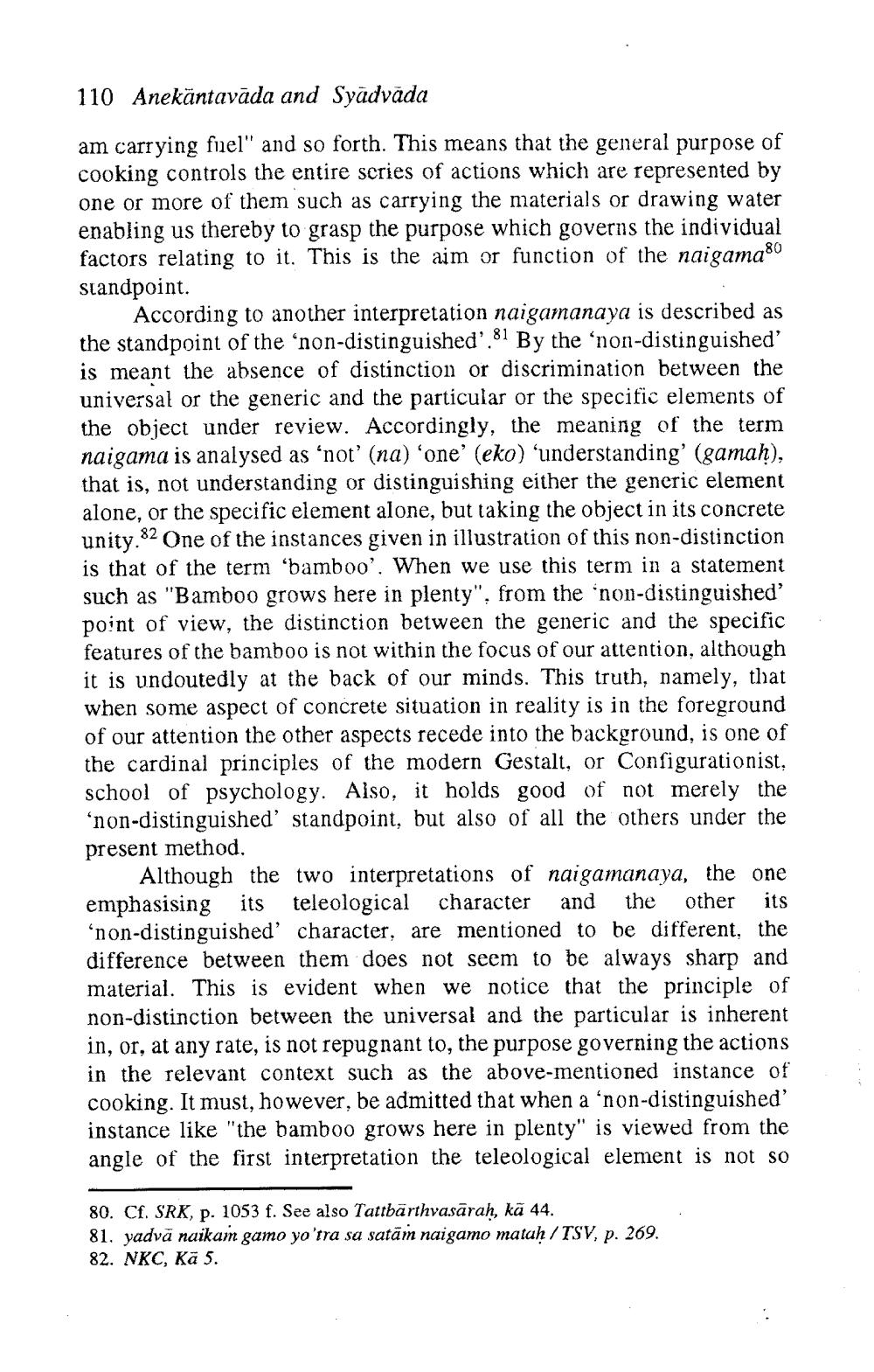________________
110 Anekäntavāda and Syadvada
am carrying fuel" and so forth. This means that the general purpose of cooking controls the entire series of actions which are represented by one or more of them such as carrying the materials or drawing water enabling us thereby to grasp the purpose which governs the individual factors relating to it. This is the aim or function of the naigama80 standpoint.
According to another interpretation naigamanaya is described as the standpoint of the ‘non-distinguished'.81 By the ‘non-distinguished' is meant the absence of distinction or discrimination between the universal or the generic and the particular or the specific elements of the object under review. Accordingly, the meaning of the term naigama is analysed as ‘not' (na) 'one' (eko) ‘understanding' (gamah), that is, not understanding or distinguishing either the generic element alone, or the specific element alone, but taking the object in its concrete unity. 82 One of the instances given in illustration of this non-distinction is that of the term 'bamboo'. When we use this term in a statement such as "Bamboo grows here in plenty", from the 'non-distinguished' point of view, the distinction between the generic and the specific features of the bamboo is not within the focus of our attention, although it is undoutedly at the back of our minds. This truth, namely, that
some aspect of concrete situation in reality is in the foreground of our attention the other aspects recede into the background, is one of the cardinal principles of the modern Gestalt, or Configurationist, school of psychology. Also, it holds good of not merely the 'non-distinguished standpoint, but also of all the others under the present method.
Although the two interpretations of naigamanaya, the one emphasising its teleological character and the other its ‘non-distinguished' character, are mentioned to be different, the difference between them does not seem to be always sharp and material. This is evident when we notice that the principle of non-distinction between the universal and the particular is inherent in, or, at any rate, is not repugnant to, the purpose governing the actions in the relevant context such as the above-mentioned instance of cooking. It must, however, be admitted that when a 'non-distinguished' instance like "the bamboo grows here in plenty" is viewed from the angle of the first interpretation the teleological element is not so
80. Cf. SRK, p. 1053 f. See also Tattbärthvasārah, kā 44. 81, yadvā naikam gamo yo'tra sa satām naigamo mataḥ/TSV, p. 269. 82. NKC, Kā 5.




